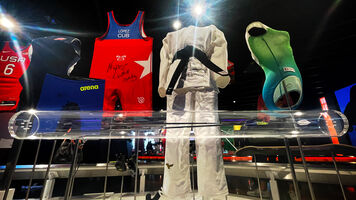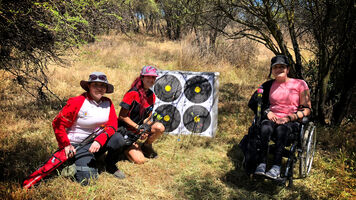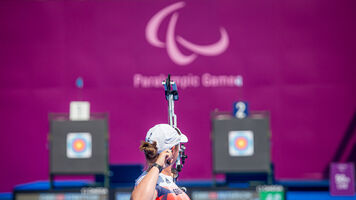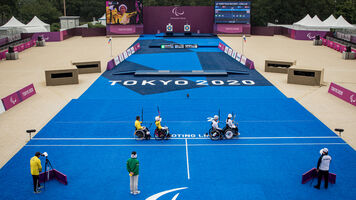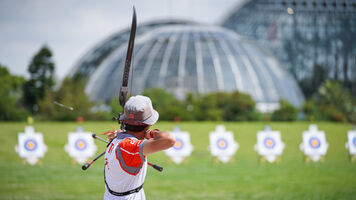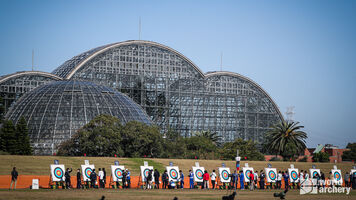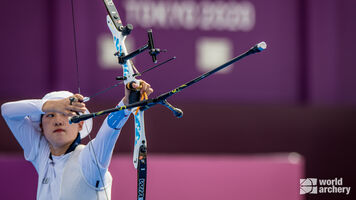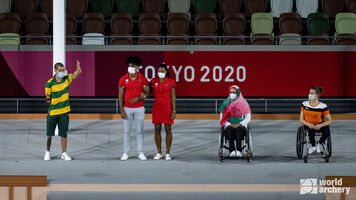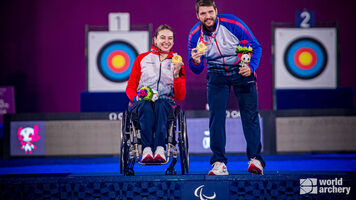Beginners guide to archery at the Tokyo 2020 Olympic Games
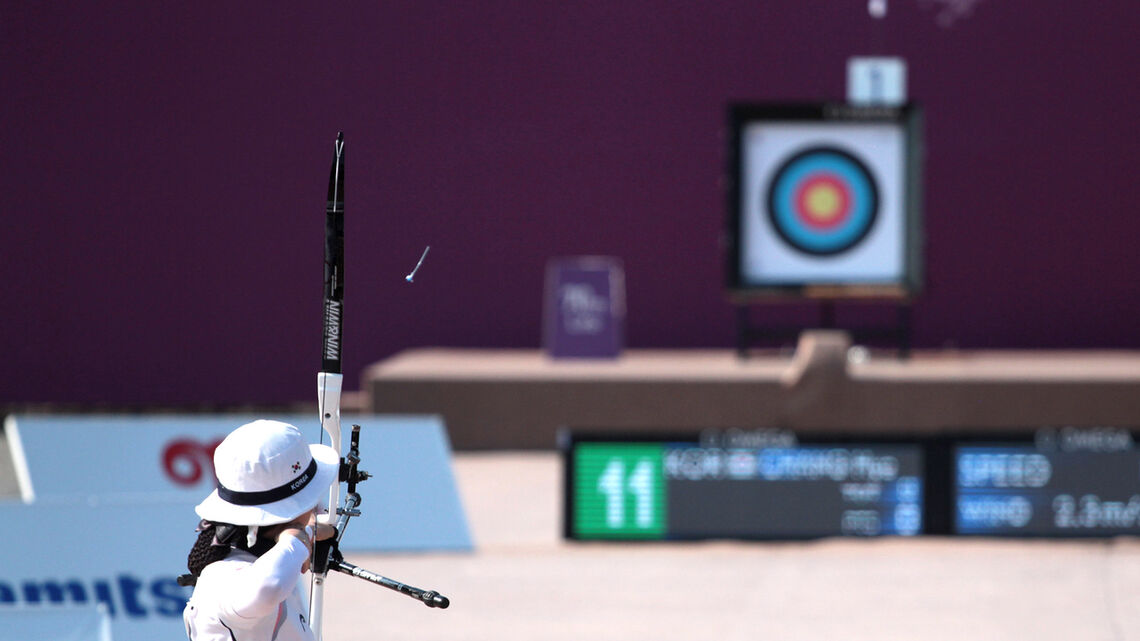
The Olympic Games is the pinnacle of international archery competition.
It’s the most coveted title for any world-class athlete – and it’s also incredibly difficult to win. Not only is there a severely limited number of quota places at the Games, just 128 compared to the 500-plus you might see at a world championships, but the margin for error is extremely small. It’s a knockout tournament, with each match lasting fewer than 15 minutes. One loss, and you're eliminated from the competition.
Korea has long been archery’s most dominant nation at the Games.
The pandemic has brought intrigue to the colour of the tournament, though. Neither Korea nor Chinese Taipei, China and Japan has really competed internationally since mid-to-late-2019. All four of these teams have a full six-athlete, two-team squad in Tokyo. What impact will they have? Their world rankings certainly don’t tell the full story.
It’s going to be thrilling. The archery competitions start on opening ceremony day – 23 July – with qualifying for all five events.
Key information
What’s happening? The 2020 Olympic Games, which were delayed 12 months due to the COVID-19 pandemic, on 23-31 July 2021 in Yumenoshima Park in Tokyo, Japan.
What’s at stake? Five Olympic Champion titles.
Who’s competing? A total of 128 athletes – 64 men and 64 women – from 51 countries.
What’s the story? Forty-nine years since archery returned to the programme of the Olympic Games (in 1972), the sport is awarding five gold medals for the first time with the addition of the mixed team competition. Korea swept the golds at Rio 2016. After more than a year away from international competition, can the big Asian nations expect such strong results at these Games?
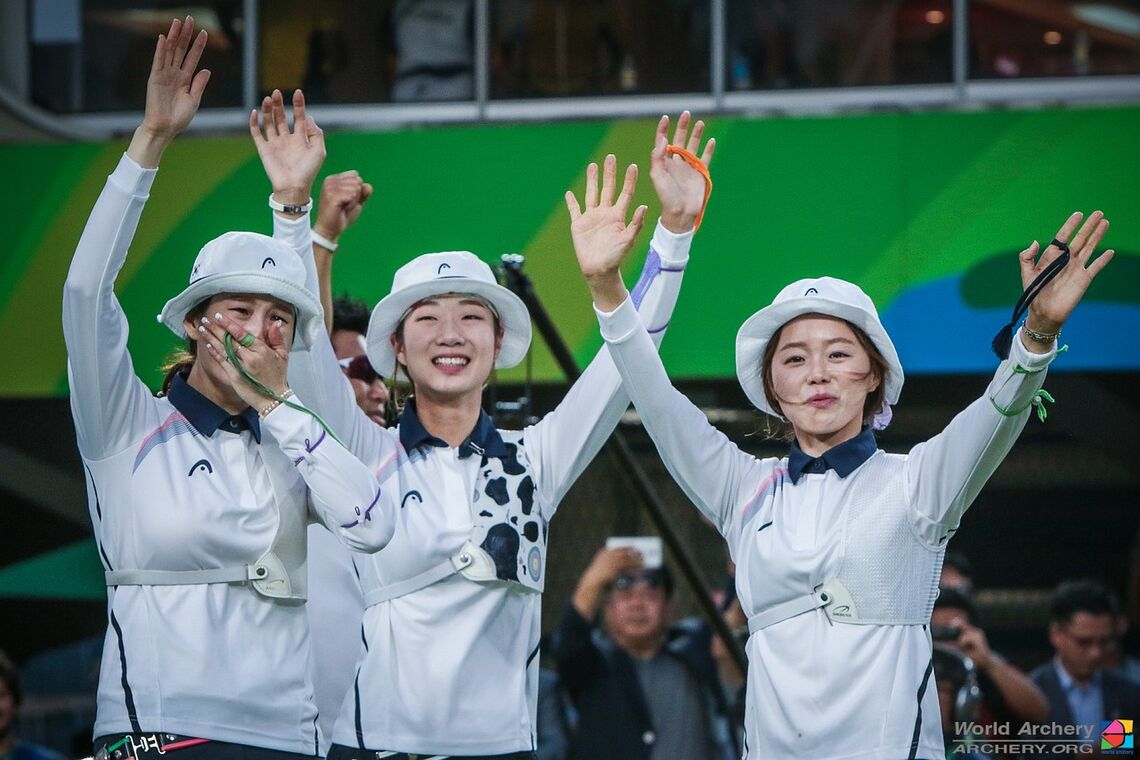
Defending champions
- Men: Ku Bonchan, Korea (not competing)
- Women: Chang Hye Jin, Korea (not competing)
- Men team: Korea
- Women team: Korea
Korea swept the four available gold medals for the first time in Olympic history at Rio 2016. For the first time at the Games, archery will award five gold medals in Tokyo.
Schedule
- Friday 23 July – qualifying
- Saturday 24 July – mixed team finals
- Sunday 25 July – women’s team finals
- Monday 26 July – men’s team finals
- Tuesday 27-Thursday 29 July – individual eliminations
- Friday 30 July – women’s finals
- Saturday 31 July – men’s finals
Storylines
1) The Korean women’s team has never lost a match at the Olympics. The team events were introduced at the Seoul 1988 Olympic Games, four years after Korea won its first Olympic archery gold in the women’s individual event courtesy Seo Hyang-soon. Since 1988, through eight editions of the Games, the Korean women’s team has never been beaten, winning eight consecutive Olympic titles.
2) Brady Ellison’s rise to the ranks of archery greatness. Archery’s winningest international archer since 2010, Ellison is appearing at his fourth Olympic Games in Tokyo – and the first of his 30s. He had arguably the best season of anybody in history in 2019, winning the World Archery Championships, collecting a record-fifth Hyundai Archery World Cup Champion trophy and setting the world record for the 72-arrow, 70-metre qualifying round, which is used at the Olympics, at 702 points. He’s just missing the Olympic title.
3) The two Bs: Bangladesh and Bhutan. Having received universality invitations to recent editions of the Olympics, archers from Bhutan and Bangladesh qualified outright for the first time for Tokyo. Bhutan’s Karma becomes a two-time Olympian when she steps off the plane in Japan, while Ruman Shana finished third for Bangladesh at the last world championships and is a genuine medal contender in Tokyo.
4) First sport to incorporate biometric data at the Games. During the individual events, archers’ heart rates will be shown on the live broadcast, visualising the stress and adrenaline of the arena for the very first time. The data will be captured remotely by cameras measuring the tiny changes in the colour of the skin on the face caused by blood as it pumps through vessels. Archery is the first sport to implement live biometric data at the Olympics.
5) A story of equality and mixed pairs. Since its addition to the programme of the world championships in 2011, the mixed team event, which sees one man and one woman compete together in matchplay, has become a staple in international competition. Ten years later, it’s finally making its debut at the Olympics – and has the potential to deliver the biggest shocks in Tokyo, with so many nations that do not necessarily have full squads able to field talented two-athlete partnerships.
Equipment
Archers at the Olympic Games use recurve bows.
The recurve bow is the modern evolution of traditional bows that have existed for thousands of years. The limbs curve away from the archer at the top and bottom of the bow, which is what gives the ‘re-curve’ its name.
To shoot a recurve bow, an archer holds the grip, lifts their arms up to shoulder height and pulls the string back to their face using their fingers. At full draw, they aim at the target through a sight and open their fingers to release the string. The energy stored in the bent limbs transfers through the string and into the arrow, sending it downrange to the target.
Drawing a competitive recurve bow can require more than 20 kilograms of force, and an arrow shot from a recurve bow can travel at speeds of over 200 kilometres per hour.
Modern recurve bows are built using technologically advanced materials including laminated carbon fibre and carbon foam, but many manufacturers also integrate natural materials such as bamboo. A complete recurve bow set-up can cost up to 3000 USD.
Arrows are normally made of carbon fibre and aluminium. Each arrow costs around 50 USD but can be reused thousands of times.
Competition format
Archers at the Olympic Games use recurve bows and compete in the discipline of target archery.
The competition features individual, mixed team and team events. A mixed team consists of two archers, one man and one woman, from the same nation. A team consists of three archers of the same gender from the same nation.
Nations must qualify quota places to compete at the Games, and only 128 quotas are available. Nations can only qualify an individual or a team place – but each team place also counts as three individual quotas. Twelve nations compete in the team events. Any nation that has at least one man and one woman qualified is eligible for the mixed team event.
Archers shoot over a distance of 70 metres at targets measuring 122 centimetres in diameter, aiming to hit a 10-ring measuring just 12.2 centimetres in diameter – or about the size of an orange.
The qualifying phase of the competition, which takes place on 23 July and consists of 72 arrows shot for cumulative score, is used to rank and then seed the archers for the matchplay phase.
Archers, teams and mixed teams then shoot through head-to-head brackets, in which the winner of each match advances and the loser is eliminated until a champion is crowned. Matches at the Olympic Games are decided using the set system.
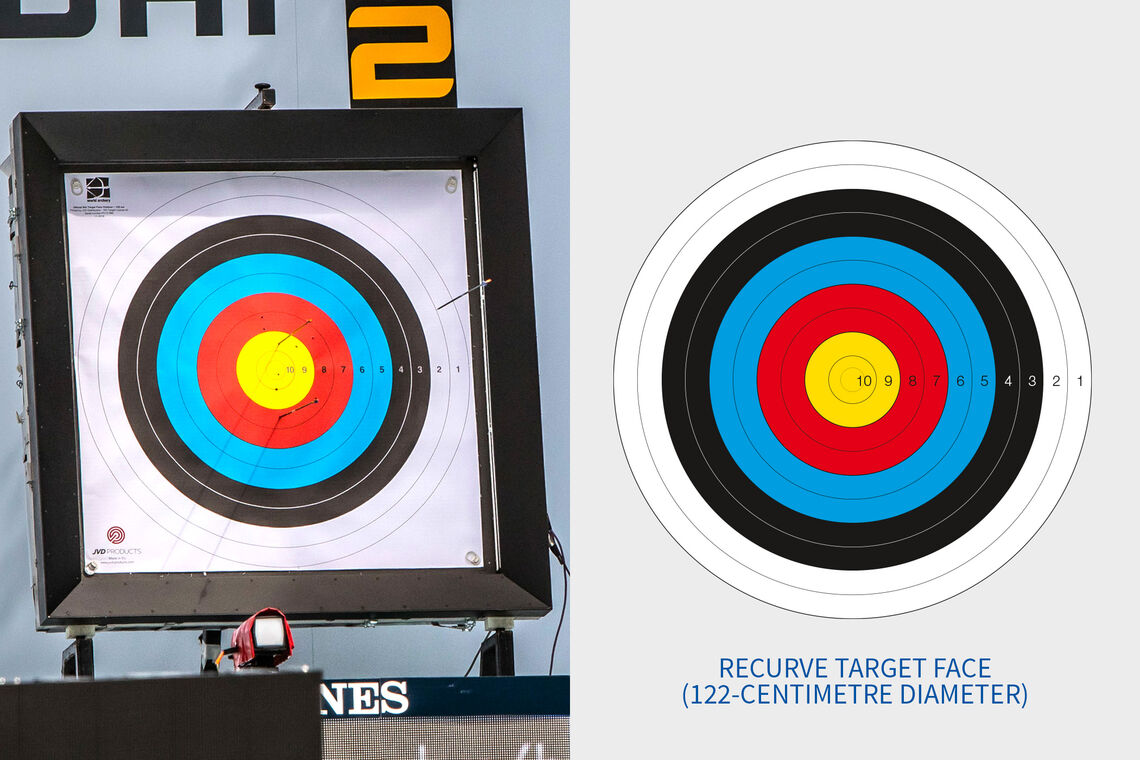
Set system: Individual
Individual matches last just under 15 minutes and see two opposing archers compete to become the first to reach six set points.
Each match is broken down into sets of three arrows. The archers shoot their arrows alternately and, at the end of each set, the archer with the highest arrow score in the set is awarded two set points. Both archers receive one set point if the arrow score is tied.
The maximum arrow score in a single set is 30 points. There is a time limit of 20 seconds per arrow and each set takes less than two minutes, followed by breaks to confirm the scores.
An archer can win a match quickly – with a score of 6-0 or in ‘straight sets’ – by winning three sets in a row.
The maximum length of an individual match is five sets. If the archers are tied on five set points – a score of 5-5 – after five sets, the match is sent to a tiebreak or single-arrow shoot-off.
Both archers shoot one arrow. The archer whose arrow lands closest to the middle of the target wins the match.
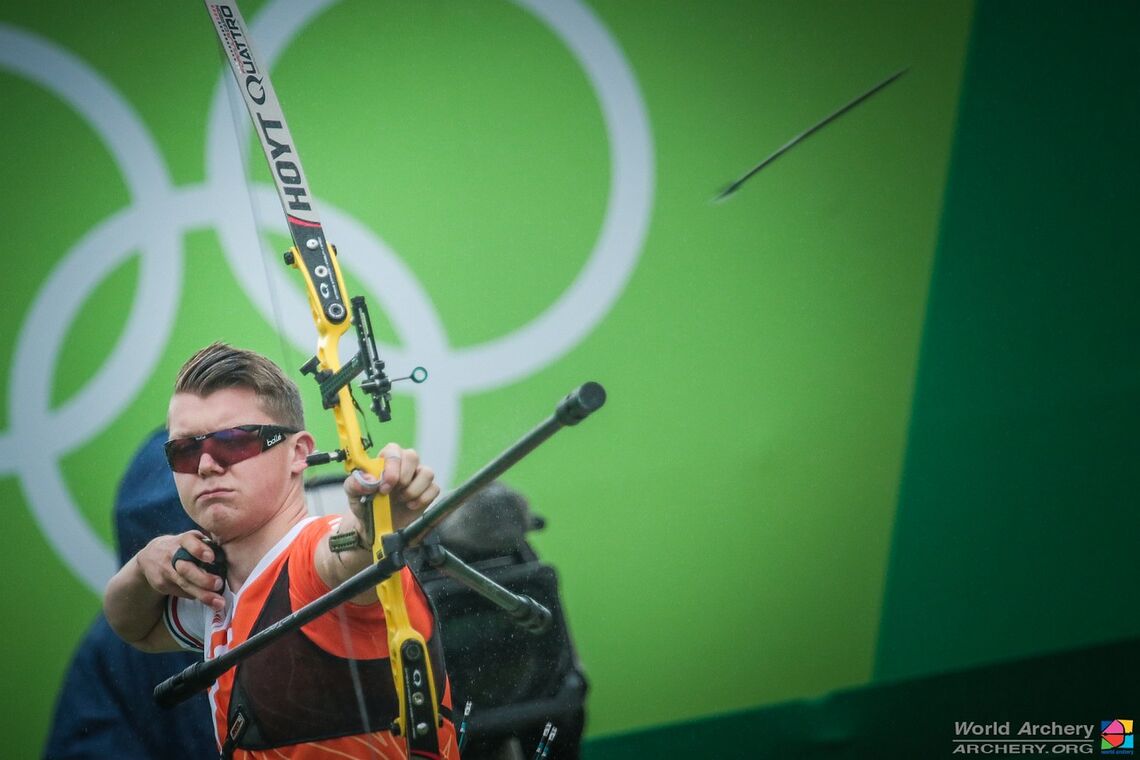
Set system: Mixed team and team
Mixed team and team matches work in a similar way to individual matches. The main differences are that the target for victory is five set points and the length of each set is different.
Mixed teams shoot four arrows per set, two per athlete. Teams shoot six arrows per set, two per athlete.
Instead of alternating each arrow, mixed team and team sets are split into two rotations, with each archer shooting one arrow in a rotation before alternating to the other team. The order in which the archers shoot can change freely between each rotation, but each archer must not shoot more than one arrow in each rotation.
The archer who shoots first in the rotation is known as the ‘opener’, and the archer who shoots last is the ‘anchor’.
The maximum length of a mixed team or team match is four sets. If the nations are tied on four set points – a score of 4-4 – after four sets, the match is sent to a tiebreak.
Both nations shoot one rotation (half a set), alternating for each arrow, and the nation with the highest score wins the match. If the scores are tied, it’s the nation with an arrow closest to the middle of the target that wins. (The second and even the third arrows are compared against each other if the first arrows are an identical distance.)
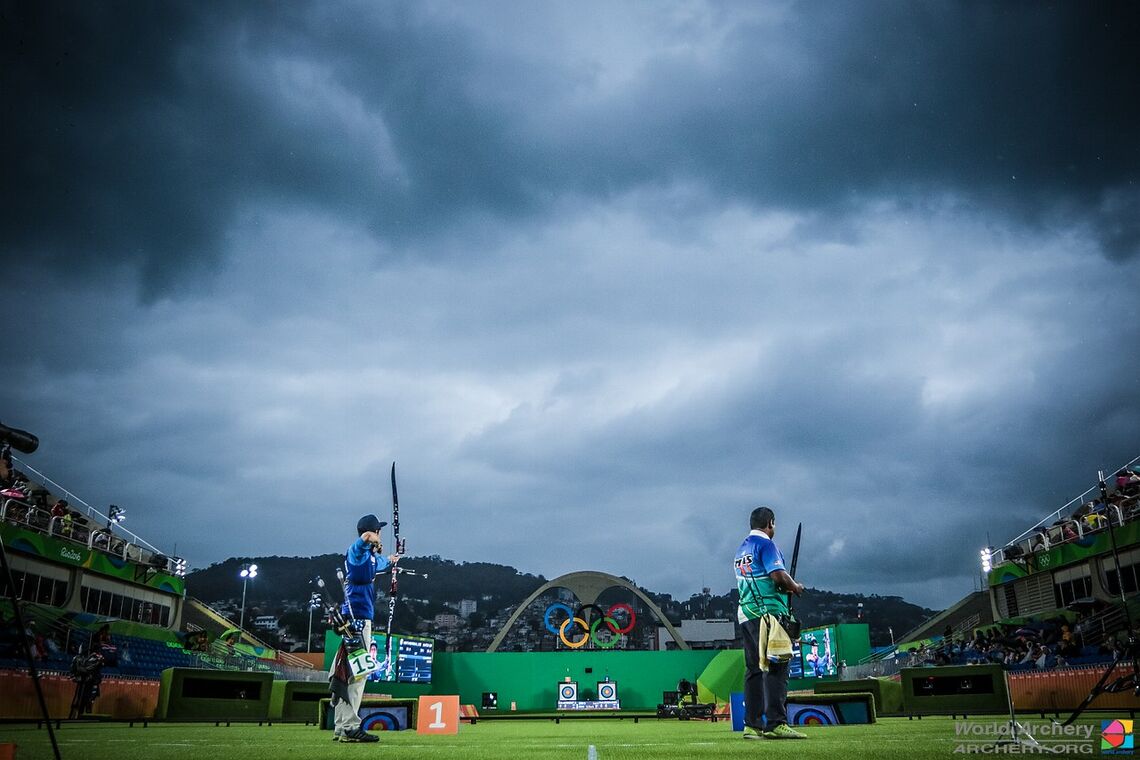
The line-up
These are the nations that will contest each of the five gold medals. The full entry list of athletes is available in the Tokyo 2020 Olympic Games section of the World Archery website.
Mixed team (16 qualify for matchplay): Australia, Bangladesh, Brazil, Canada, China, Chinese Taipei, Colombia, Egypt, France, Germany, Great Britain, India, Indonesia, Italy, Japan, Korea, Malaysia, Mexico, Moldova, Mongolia, Netherlands, Poland, ROC, Spain, Tunisia, Turkey, Ukraine, USA and Vietnam.
Women’s team: Belarus, China, Chinese Taipei, Germany, Great Britain, Italy, Japan, Korea, Mexico, ROC, Ukraine and the USA.
Men’s team: Australia, China, Chinese Taipei, France, Great Britain, Indonesia, India, Japan, Kazakhstan, Korea, Netherlands and the USA.
Women: Australia, Bangladesh, Belarus, Bhutan, Brazil, Canada, Chad, China, Chinese Taipei, Colombia, Czech Republic, Denmark, Ecuador, Egypt, Estonia, France, Germany, Great Britain, Greece, India, Indonesia, Italy, Japan, Korea, Malaysia, Mexico, Moldova, Mongolia, Netherlands, Poland, ROC, Romania, Slovakia, Spain, Sweden, Tunisia, Turkey, Ukraine, USA and Vietnam.
Men: Australia, Bangladesh, Belgium, Brazil, Canada, Chile, Colombia, Egypt, Finland, France, Germany, Great Britain, Hungary, Indonesia, India, Iran, Israel, Italy, Luxembourg, Japan, Kazakhstan, Korea, Malaysia, Malawi, Mexico, Moldova, Mongolia, Netherlands, Poland, ROC, Slovenia, Spain, Tunisia, Turkey, Ukraine, US Virgin Islands, USA and Vietnam.
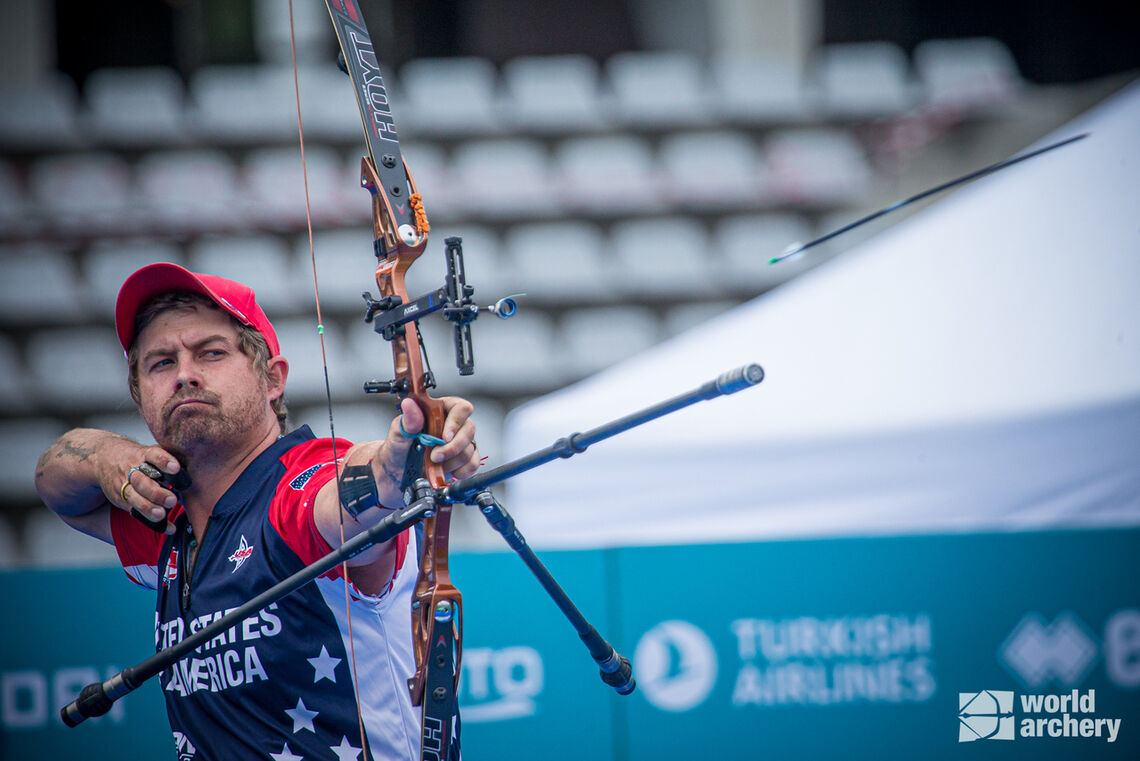
Trivia
The USA’s Brady Ellison (recurve man) and Deepika Kumari of India (recurve woman) are the world number ones arriving at the Tokyo 2020 Olympic Games. Both were ranked first ahead of the London 2012 Olympic Games, too. Had the Games been held in 2020, it would likely have been Ellison and Korea’s Kang Chae Young in those spots.
Korea is archery’s most successful nation at the Olympic Games, having won 39 medals, including 23 golds, since the sport’s return to the programme in 1972. (The first medal wasn’t won by a Korean archer until 1984.)
Archery was one of the first sports to include a dedicated women’s event, back in 1904, and one of the first to feature a fully gender-balanced programme when the current 128-athlete quota was introduced in 1996. The mixed team, debuting in Tokyo, is a natural progression, given the growing parity between men and women in competition.
The 70-metre distance over which athletes compete is the same as the wingspan of two Boeing 737 aeroplanes side-by-side.


